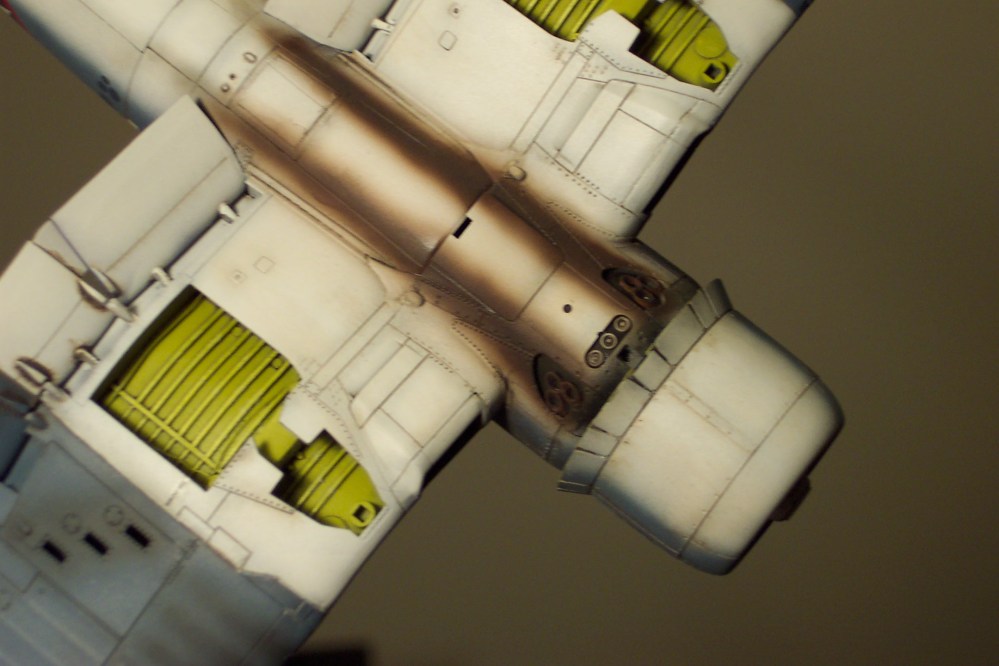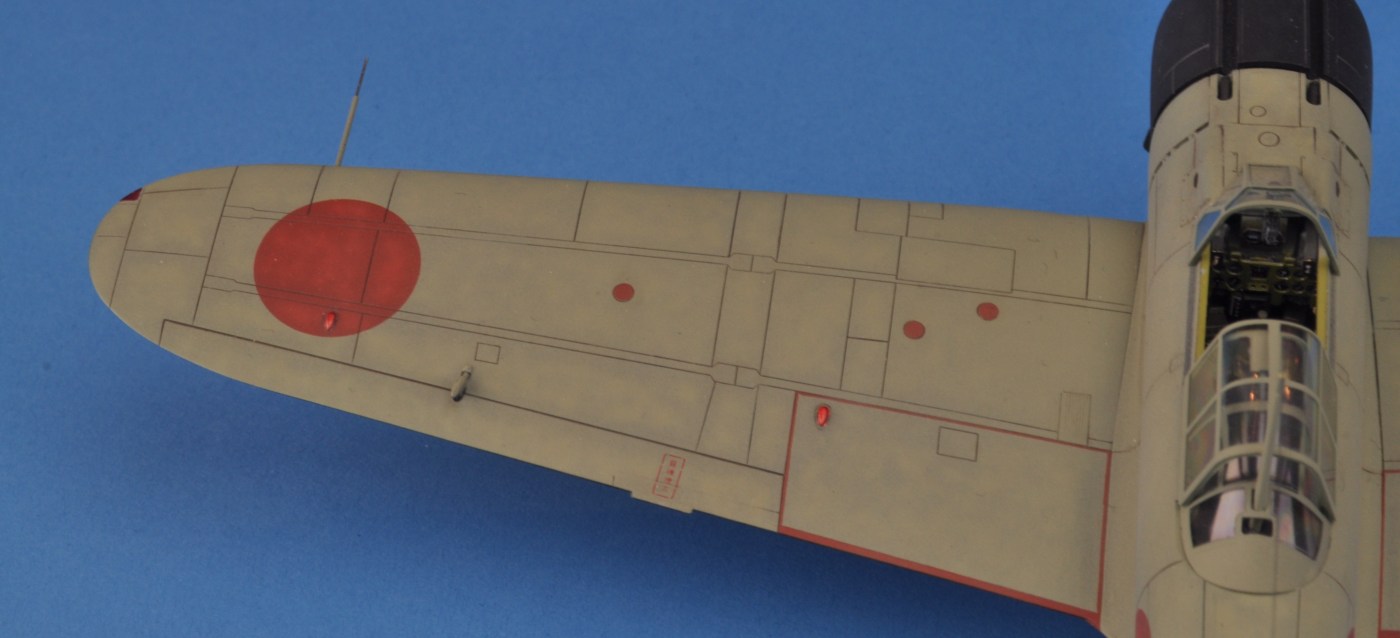Whether we are pre-shading panel lines, post shading, black basing, dot filtering, mottling or marbling, the goal is to find a way to weather or distress the paint finish and otherwise to bring some interest to the surface of the model.
When I first got back into the hobby (circa 2007) the finishing technique that was de rigeur was post-shading. This was seen as an advancement over the panel-line shading technique, which still had its devoted followers. Actually, the first model I did when I came back was an F4U-1A Corsair where I tried the panel line technique for the first time. I may have been a little heavy with the pre-shade as I was using a Badger Anthem airbrush. However, even as a beginner I was able to blend with the main colour and get a nice finish. I definitely felt success:

My third model was an all black Korean war F4U-5N Corsair where I tried my hand at post shading. Again, it was a bit heavy handed at first but with a thin blending coat, I got it to where there was subtle variations in tone on an all black airplane.
Since those days we have seen the fall of the ‘pre’ and ‘post’ shading communities primarily because of the uniformity of the effect and the ‘common knowledge’ that real world vehicles do not weather in a uniform pattern. There is also the criticism that panel shading gives models a ‘quilted’ appearance that, again, is not random and natural looking.
This quest for a more ‘random’ appearance has led to the rise of the ‘Black Basing’ technique of blotting and random patterns of the main colour over a black primer. Of course there is more to it and with practice and a quality airbrush, modelers have achieved fantastic results. The problem I have with this technique is that I can’t get it to work! At least not with a finish that I like.
What does work for me is to start with the principle of black basing but then use thin blending coats to build up the main colour. This way I get a wonderful and subtle ‘marbling’ effect without the uniformity of a panel line shade. It is also easy to do.




Some techniques are easy to describe in writing. With painting techniques, a video can go much further in describing things beyond paint to thinner ratios and spraying pressures. So, I put together a video showing how I do it. You can view it here or click below:
Last thing
There is no “one true way” to replicate worn paint despite whatever technique is en vogue or is currently considered passe. And that is because every method can work. The knock on pre-shading is usually related to uniform ‘lines’ on the model. But those can be toned down with a few more passes of the main colour, tinted clear coats and even other distressing techniques like filters. I think it is still a fool proof method for those trying these paint distressing techniques for the first time.


I watched the video earlier… good stuff. I’ve seen Doog’s videos about it as well. I really need to try it out myself. As a matter of fact I may try it on my next aircraft kit.
Question: have you ever employed the hairspray technique to creat chipping? Specifically, along the wing roots to show the bare metal, when black basing.
LikeLiked by 2 people
I have tried it – once… on my P-38 build. That one is posted on my blog. I did it incorrectly (waited far too long between painting and chipping) but it worked under black basing though I did have to work hard at chipping the paint.
LikeLike
I have watched it yesterday. Most interesting but my Badger 350 airbrush is not precise enough to try it. That being said, knowing me I will try it anyway. What have I got to lose?
LikeLike
Does the 350 have the ability to swap out tips? You might get finer “lines” with a smaller tip.
LikeLike
I have the three types of tips. I will eventually try it this spring and practice.
LikeLike
Excellent tutorial! Andy
LikeLiked by 1 person